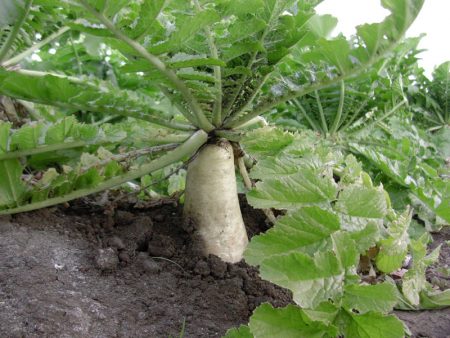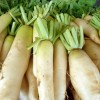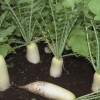When and how to plant Daikon: the best ways
Content
Landing dates
Correctly chosen planting dates are an indispensable condition for the successful cultivation of a daikon. If these recommendations are neglected, the harvest can be disappointing and time will be wasted. And it's not about the capriciousness of the culture - on the contrary, the daikon is very unpretentious to growing conditions, it's just that its biological characteristics are such that it needs coolness and a short daylight hours to form root crops.
Daikon, like all types of radish or radish, grows best in cool soil. Its seeds are capable of sprouting when the ground warms up to 3-5 ° C, and 10-12 hours of daylight is enough for a normal growing season. In addition, plants perfectly tolerate short-term frosts, and at the same time continue to form a root crop, while they react in the opposite way to a sharp increase in temperature - they begin to build up the ground part and release an arrow. Flowering is also facilitated by the constant increase in daylight hours and air temperature in spring, so it is almost impossible to grow a good harvest in the spring-summer season.
Since it is artificially very problematic to create favorable conditions for the growth of root crops artificially, it remains only to choose the right timing in which the planting of the daikon will be most successful. In our latitudes, it is recommended to plant crop seeds from the second half of summer, when daylight hours begin to decrease. However, at this time, the soil is still quite warm, therefore, in regions with hot summers, it is better to shift the planting time to early August.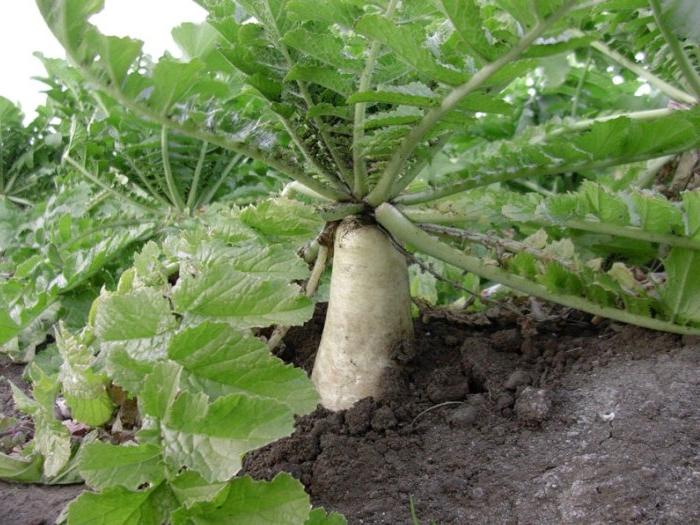
To grow a good daikon, planting dates should be selected in accordance with varietal characteristics. Summer planting is more suitable for medium and late ripening varieties. For early varieties that ripen 40-60 days after sowing seeds, planting in July will be premature, since the plants will immediately go to the arrow, bypassing the phase of root crop formation. An early daikon is best sown in autumn or early spring. Spring is preferable, since early roots do not have a long shelf life, and there is no point in growing them in the fall for winter use.
Video "When and how to plant a daikon"
This video will tell you how and when to plant and grow a daikon.
Spring planting
Sowing daikon in spring should be done as early as possible, in late March - early April. There is no need to fear that the seeds will freeze. The culture has a high cold resistance, therefore, sowing is allowed immediately after the snow melts. To protect the soil from repeated freezing, the bed is covered with a film overnight, and in the daytime the shelter is removed, until the threat of spring frosts has passed. If the seeds are planted in early April, then by the end of May the harvest of early root crops will already ripen.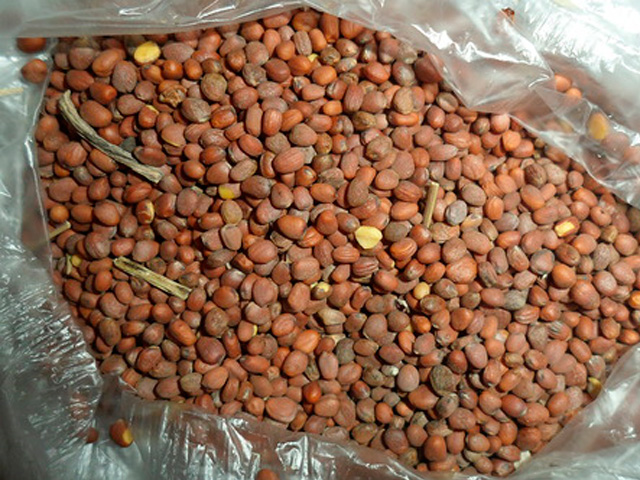
I would like to remind you that only daikon of early varieties with a short growing season can be sown in spring.It makes no sense to plant mid-season and late varieties with a growing season of 70-100 days, because at high temperatures and long daylight hours, root crops simply cannot form. Also, spring sowing should not be delayed until late April or May, unless the plants are being grown for seed.
It is best to plant daikon seeds at the end of May, then by the end of August - September the pods with seeds will fully ripen. For good flowering, plants should be planted in a sunny area, since Japanese radish planting and care, as well as the planting timing of which affects the formation of peduncles, will quickly shoot an arrow in warm, sun-warmed soil. Some gardeners use ready-made root crops from the previous harvest to obtain seeds, because radish is a two-year-old crop. They are planted in the same way as carrots or beets: the tops are cut off, leaving small (5-7 cm) cuttings, and the root crop is buried in the ground at a slight slope. With this method, the seeds are ready for harvest much earlier.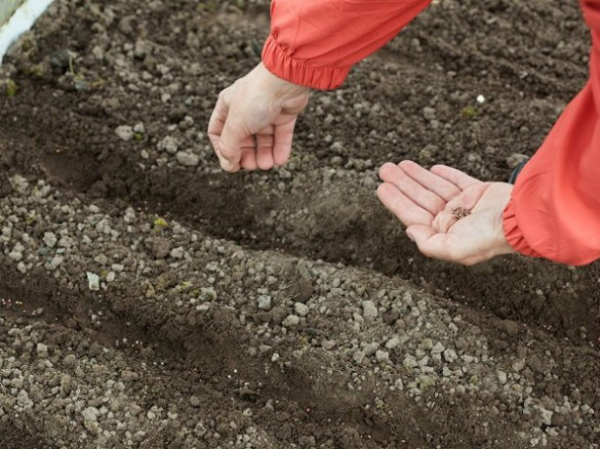
The plot for the spring planting of the daikon is prepared in the fall. It is advisable that the garden bed is well lit by the sun for at least half a day and is protected from the winds. Daikon is quite unpretentious to the composition of the soil, but on light sandy loam or loamy soil, it grows better, and root crops reach a larger size. It is very important that the soil is not acidic, otherwise you can not count on the harvest.
Site preparation consists of digging up the soil and applying fertilizers. Ideally, if the soil in your area is loose and rich in humus, but if this is not the case, then its fertility should be increased - when digging, add mineral and organic fertilizers. From mineral mixtures for daikon, superphosphate (40-50 g / m²), potassium salt (20 g / m²) are suitable. From organic matter, the culture accepts humus or compost well (0.5-1 buckets / m²), as well as ash 2-3 glasses / m². If the soil is acidic, it must be limed.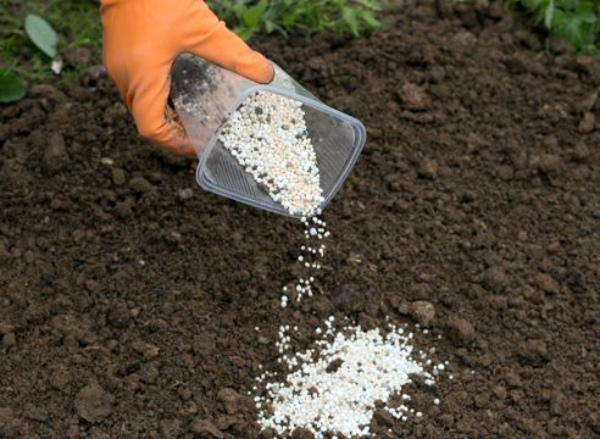
The daikon is planted according to a scheme that may differ depending on the variety. For plants with large or round roots, as well as those that develop bulky tops, planting is recommended at a distance of 30 cm between holes and 50-60 cm between rows. For long root crops, planting at a distance of 20 cm and 40 cm between rows is permissible. For a daikon, planting seeds in open ground is most acceptable, but it can also be grown in seedlings.
Summer landing
In central Russia, the second half of July and August is considered the most favorable period for sowing daikon. At this time, the length of the day is steadily decreasing, and the soil cools down to the desired temperature at night, which contributes to the creation of favorable conditions for growing root crops. In August - September, the probability of releasing arrows is reduced to a minimum, and root crops begin to develop more rapidly.
As already mentioned, summer is suitable for planting mid-ripening and late varieties, and the late varieties are best sown at the end of July, and with an average ripening period - in August. A late daikon planted in the second half of summer will ripen in late October. At this time, night frosts are already possible, but they are not terrible for the daikon, since the root crop can remain in the ground even at a temperature of -5 ° C without losing its taste and useful qualities.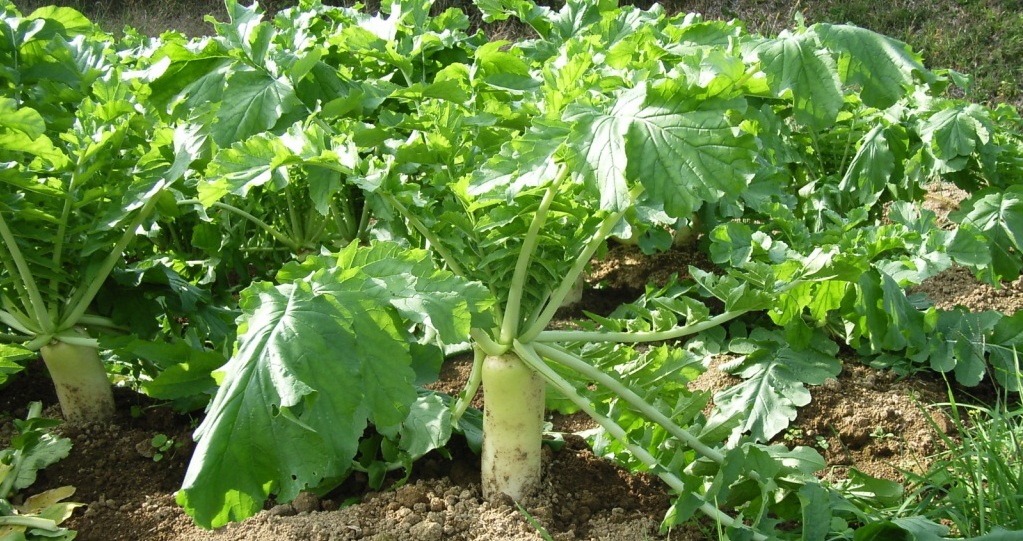
If the plants are grown for the purpose of obtaining greens (used in cooking), then the planting time is not so fundamental - it can be August, or even June. However, you need to understand that it will not be possible to get root crops from planting in June - such plants, in any case, regardless of the variety, will release an arrow. In order for the summer sowing of daikon to give a high yield, you should not rush to planting dates - it is better to sow the seeds later than too early.
Autumn planting
In southern regions, where summer is long and autumn is warm, daikon can be sown in early autumn.Mid-season varieties with a ripening period of 65-70 days will have enough time to form a root crop before the onset of frost, besides, late planting allows you to keep vegetables longer. Late ripening varieties should not be planted in the fall, but it all depends on the climate of a particular region.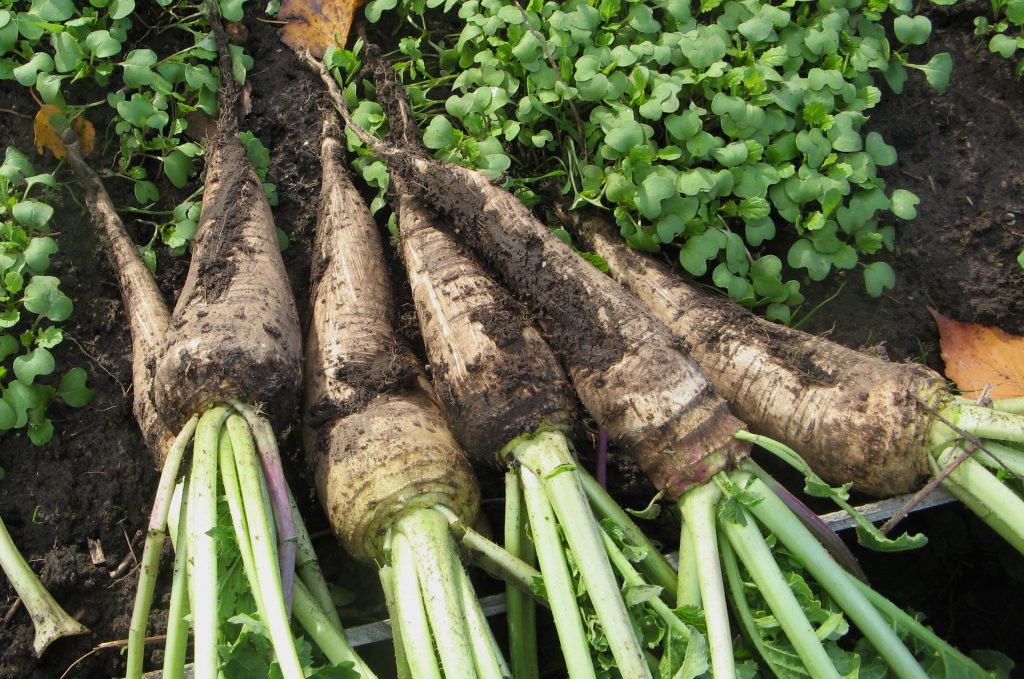
A garden bed for autumn planting is prepared in spring. The site is dug up and fertilized in the same way as during the spring digging. However, if you are using a fertile bed after growing other vegetables, then you should not apply fertilizer - just dig deep (30-35 cm) deep enough. Autumn planting is convenient because the already vacated areas can be used for the garden bed, thus obtaining a double harvest. By the way, in the east, this is exactly how the daikon is grown - as a secondary culture.
Some vegetable growers practice subwinter sowing of daikon, which is also carried out in the fall, but just before frost. Planting for the winter is carried out according to the same scheme as usual, with the only difference that after sowing, the garden bed is covered with organic mulch (peat, humus, dry foliage), which will warm the seeds in the most severe frosts. Planting seeds in the winter allows you to get an earlier and higher harvest in the spring.
Planting dates for seedlings
The seedling method of planting a daikon allows you to grow root crops a month earlier than usual, which is very important for a southern climate, where spring comes early and suddenly. In greenhouses, or in pots, seeds for seedlings can be sown in early March. In about a month they will get stronger, and if the weather permits, the plants can be transplanted into open ground. By this time, they already have several true leaves, while the seeds are just being planted in the soil.
It is advisable to grow seedlings in disposable containers with peat soil mixture. Young shoots are quite sensitive to transplanting, so they need to be removed from the pot and transplanted into a garden bed along with an earthen substrate. It should also be borne in mind that the seedling method is acceptable for varieties with round root crops, but a long daikon does not tolerate a transplant, and even more so a pick.
The process of growing seedlings takes about a month: seedlings appear in 3-5 days, thinning is carried out after 2 weeks, and another 2 weeks are allotted for growing leaves and hardening - during the last 2 weeks the plants are taken out for a couple of hours in the air in order to adapt to external environment. During the entire time, the seedlings need to be looked after: from time to time to water, loosen the soil, make sure that the sprouts do not stretch out. In open ground, seedlings are planted when the average daily air temperature is set at 10 ° C. At a lower degree, the bed must be covered with a film at night, and the shelter must be removed during the day.
Video "Agrotechnics of growing daikon"
Experienced gardeners in this video will show you how to approach the cultivation of this vegetable.

